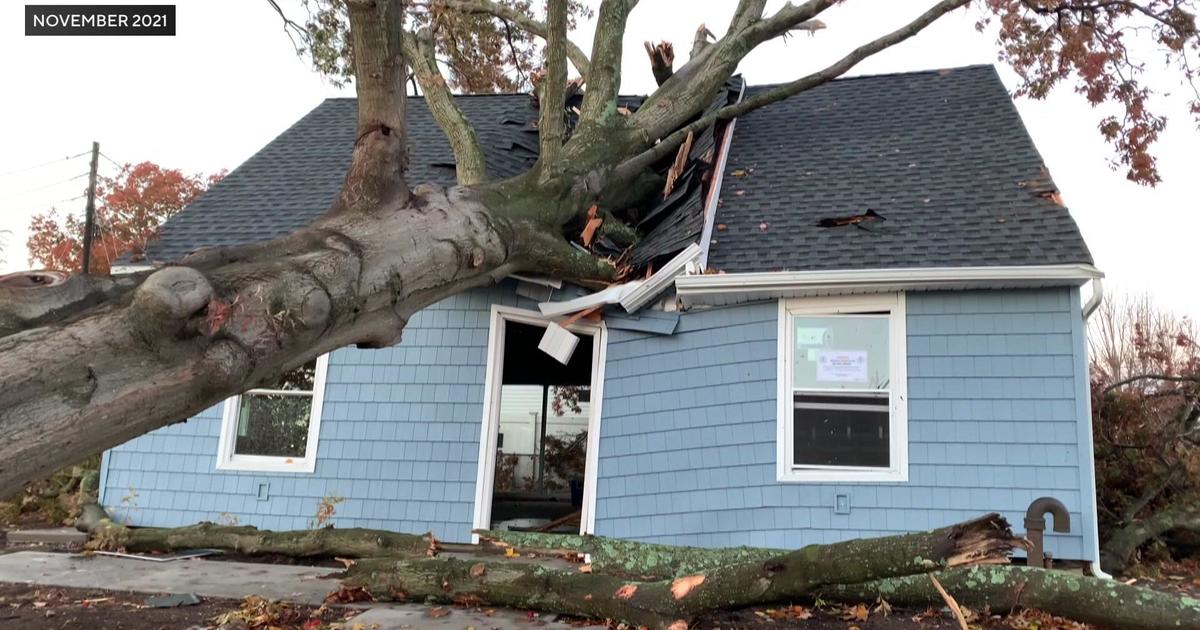FDA Issues Graphic Warning Labels For Cigarette Packs To Deter Smoking
NEW YORK (CBSNewYork) -- The anti-smoking lobby in New York has a new weapon.
The Food and Drug Administration will require all packs of cigarettes to include graphic warning labels conveying the dangers of smoking. Cigarette makers have until the fall of 2012 to comply.
The nine labels feature graphic images including rotting teeth, diseased lungs, a corpse of a smoker, a man with a tracheotomy smoking and a mother holding a baby with smoking swirling around them. The labels will include phrases like "Smoking can kill you'' and "Cigarettes cause cancer.''
Click here to see all of the images
The labels, which the FDA released Tuesday, are a part of the most significant change to U.S. cigarette packs in 25 years. They're aimed at curbing tobacco use, which is responsible for about 443,000 deaths in the U.S. a year.
The labels will take up the top half -- both front and back -- of a pack of cigarettes and each will include a national quit smoking hotline number. Warning labels also must appear in advertisements and constitute 20 percent of an ad.
Mandates to introduce new graphic warning labels were part of a law passed in 2009 that, for the first time, gave the federal government authority to regulate tobacco, including setting guidelines for marketing and labeling, banning certain products and limiting nicotine. The announcement follows reviews of scientific literature, public comments and results from an FDA-contracted study of 36 labels proposed last November.
In recent years, more than 30 countries or jurisdictions have introduced labels similar to those being introduced by the FDA. The U.S. first mandated the use of warning labels stating "Cigarettes may be hazardous to your health'' in 1965. Current warning labels -- a small box with black and white text -- were put on cigarette packs in the mid-1980s.
The FDA says the new labels will "clearly and effectively convey the health risks of smoking'' aimed at encouraging current smokers to quit and discouraging nonsmokers and youth from starting to use cigarettes.
New York City has been vigilant in its fight against smoking. Numerous bans have been implemented to prevent smoking in city parks, beaches and pedestrian plazas. Legislation was also passed this weekend to ban smoking on Long Island Rail Road and Metro North platforms.
Last week, Democrat Assemblyman David Weprin proposed legislation that would ban adults from smoking in cars when children under the age of 14 are present. The bill would apply even when the windows are rolled down.
The new labels come as the share of Americans who smoke has fallen dramatically since 1970, from nearly 40 percent to about 20 percent. The rate has stalled since about 2004. About 46 million adults in the U.S. smoke cigarettes.
It's unclear why declines in smoking have stalled. Some experts have cited tobacco company discount coupons on cigarettes or lack of funding for programs to discourage smoking or to help smokers quit.
While it is impossible to say how many people quit because of the labels, various studies suggest the labels do spur people to quit. The new labels offer the opportunity for a pack-a-day smoker to see graphic warnings on the dangers of cigarettes more than 7,000 times per year.
The FDA estimates the new labels will reduce the number of smokers by 213,000 in 2013, with smaller additional reductions through 2031.
Tobacco use costs the U.S. economy nearly $200 billion annually in medical costs and lost productivity, the FDA said. Tobacco companies spend about $12.5 billion annually on cigarette advertising and promotion, according to the latest data from the Federal Trade Commission.
The World Health Organization said in a survey done in countries with graphic warning labels that a majority of smokers noticed the warnings and more than 25 percent said the warnings led them to consider quitting.
Canada introduced similar warning labels in 2000. Since then, its smoking rates have declined from about 26 percent to about 20 percent. How much the warnings contributed to the decline is unclear because the country also implemented other tobacco control efforts.
Do you think the new labels will convince smokers to kick the habit? Are they too graphic? Let us know below
(TM and Copyright 2011 CBS Radio Inc. and its relevant subsidiaries. CBS RADIO and EYE Logo TM and Copyright 2011 CBS Broadcasting Inc. Used under license. All Rights Reserved. This material may not be published, broadcast, rewritten, or redistributed. The Associated Press contributed to this report.)



